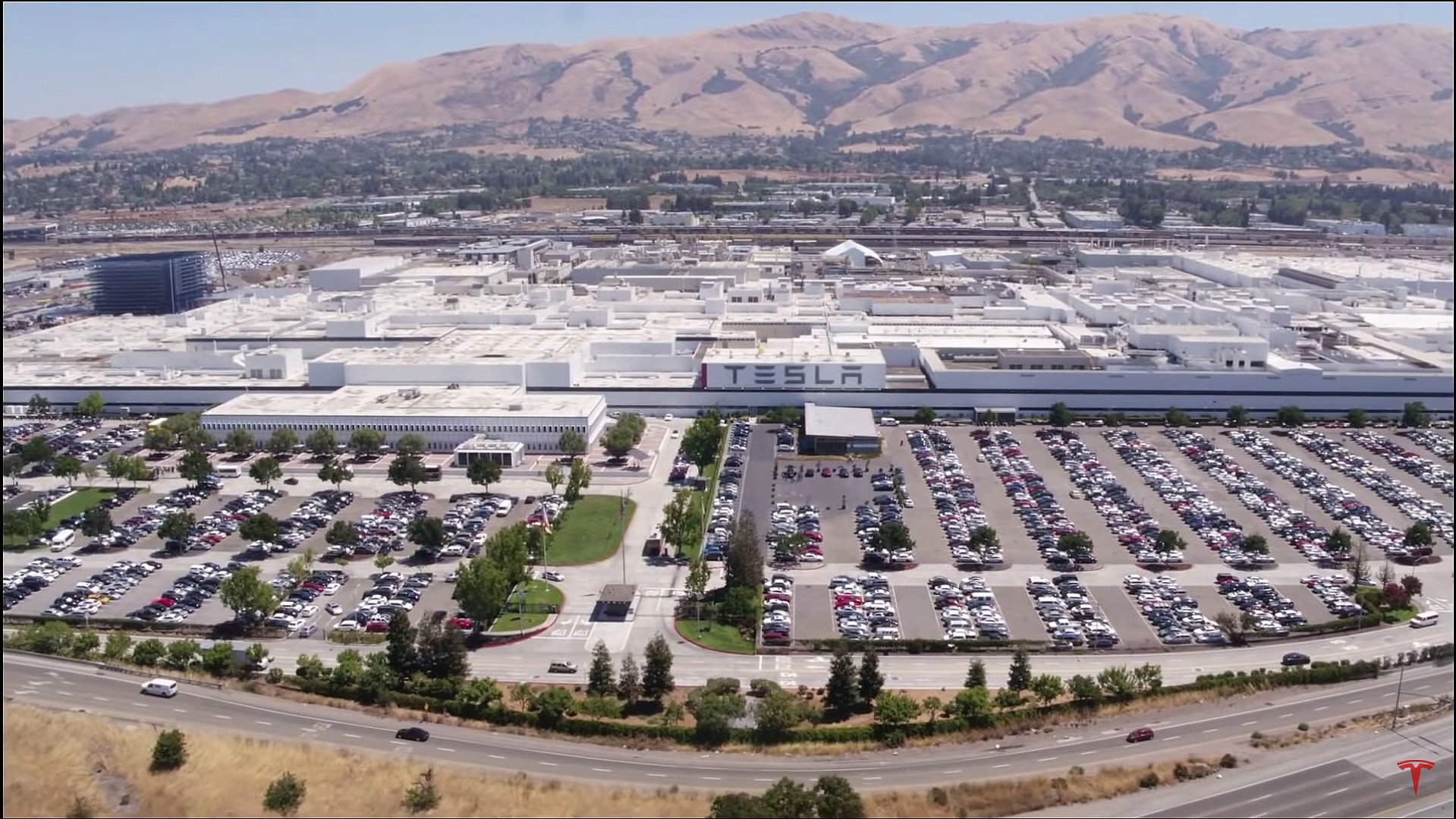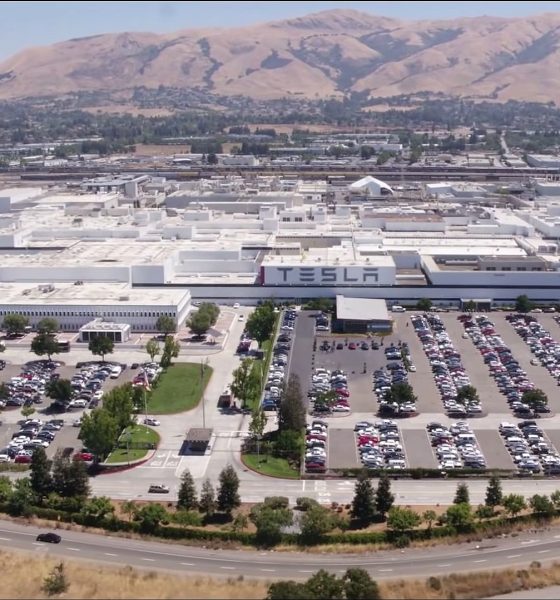

News
Tesla ‘sabotage’ at Fremont Factory was due to a racial justice protest, claims report
Earlier this month, reports emerged that Tesla had terminated an employee at the Fremont Factory over what acting general counsel Al Prescott described as an act of “sabotage” that resulted in the facility’s operations being disrupted for a few hours. New details have now emerged suggesting that the disruption may have been caused by a racial justice protest over Breonna Taylor’s grand jury decision.
In his email to Tesla employees, Prescott stated that an employee at the Fremont Factory had attempted to “maliciously sabotage” a part of the facility. The acting general counsel did not provide many details about the incident, though he stated that the quick actions of Tesla’s IT and InfoSec teams helped prevent further damage to the facility. Prescott also shared that the employee in question was terminated over the incident.
News publication Protocol was recently able to retrieve an email from a Tesla engineer telling several colleagues that the disruption of the Fremont Factory was the result of a “peaceful direct action protest” following the grand jury decision to not charge any of the officers involved in the controversial killing of Breonna Taylor, a full-time ER technician who was fatally shot in her Louisville, Kentucky apartment on March 13, 2020, by plainclothes officers.
In his email, which was sent on September 30, the engineer noted that he wanted to offer a “brief explanation of my behavior that day and how my role at Tesla fits within the broader movement for racial, social, and economic justice.” He also asked his colleagues to forward his message to others in the factory “to whom you feel I owe an explanation.” The engineer shared some of his own experiences with police harassment in his email as well, stating that he has been pulled over, handcuffed, stopped and frisked, and even had guns drawn on him.
“I have done a substantial amount of work over the years to heal from those personal traumas. Unfortunately, the events of 2020 have punctured new wounds and old scars. But this is not about me, this is about a system that has little to no regard for Black and Brown bodies. This is about shutting down technocratic oppression in order to open up this nation’s bodily and spiritual wounds,” the engineer wrote.
While the engineer did not directly admit that he was behind the “sabotage” of the Fremont Factory’s operations, he did state in his message that such acts of “protest” usually happen as a way for people to express their pain and confusion.
“Direct action protests within the workplace often occur as a means of expressing the pain and confusion felt daily in the lives of oppressed people. As a Tesla employee, I often wonder where my role sits to advance the causes of Black and Brown liberation all while economically benefiting from the exploitation of historically marginalized Black and Brown labor on stolen Chochenyo Ohlone land,” the engineer added.
Ultimately, the engineer admitted that he does not know what will happen to him next, though he noted that he hoped that his actions would be “a catalyst for genuine change” within Tesla. He remarked that he understood that he was speaking “from a position of privilege” and that “those privileges can easily be stripped away.”
“To conclude, I have been asking myself: is Tesla a place where people who have experienced profound intergenerational trauma can work and thrive? I still don’t know the answer to that, but the next few days will acutely reveal that for me,” the engineer added.
A Tesla employee, who spoke with Protocol on the day of the incident, noted that the email’s author had been in a conference call with about a dozen engineers about the disruption. During the call, the email’s author reportedly informed that other engineers that he had resolved the issue, which led to another participant in the conference to joke if the outage was a prank. Just as noted by Tesla’s acting general counsel, the Fremont Factory was indeed returned to full working order within a few hours.
H/T Drive Tesla Canada.

News
Elon Musk’s Grokipedia surges to 5.6M articles, almost 79% of English Wikipedia
The explosive growth marks a major milestone for the AI-powered online encyclopedia, which was launched by Elon Musk’s xAI just months ago.

Elon Musk’s Grokipedia has grown to an impressive 5,615,201 articles as of today, closing in on 79% of the English Wikipedia’s current total of 7,119,376 articles.
The explosive growth marks a major milestone for the AI-powered online encyclopedia, which was launched by Elon Musk’s xAI just months ago. Needless to say, it would only be a matter of time before Grokipedia exceeds English Wikipedia in sheer volume.
Grokipedia’s rapid growth
xAI’s vision for Grokipedia emphasizes neutrality, while Grok’s reasoning capabilities allow for fast drafting and fact-checking. When Elon Musk announced the initiative in late September 2025, he noted that Grokipedia would be an improvement to Wikipedia because it would be designed to avoid bias.
At the time, Musk noted that Grokipedia “is a necessary step towards the xAI goal of understanding the Universe.”
Grokipedia was launched in late October, and while xAI was careful to list it only as Version 0.1 at the time, the online encyclopedia immediately earned praise. Wikipedia co-founder Larry Sanger highlighted the project’s innovative approach, noting how it leverages AI to fill knowledge gaps and enable rapid updates. Netizens also observed how Grokipedia tends to present articles in a more objective manner compared to Wikipedia, which is edited by humans.
Elon Musk’s ambitious plans
With 5,615,201 total articles, Grokipedia has now grown to almost 79% of English Wikipedia’s article base. This is incredibly quick, though Grokipedia remains text-only for now. xAI, for its part, has now updated the online encyclopedia’s iteration to v0.2.
Elon Musk has shared bold ideas for Grokipedia, including sending a record of the entire knowledge base to space as part of xAI’s mission to preserve and expand human understanding. At some point, Musk stated that Grokipedia will be renamed to Encyclopedia Galactica, and it will be sent to the cosmos.
“When Grokipedia is good enough (long way to go), we will change the name to Encyclopedia Galactica. It will be an open source distillation of all knowledge, including audio, images and video. Join xAI to help build the sci-fi version of the Library of Alexandria!” Musk wrote, adding in a later post that “Copies will be etched in stone and sent to the Moon, Mars and beyond. This time, it will not be lost.”
News
Tesla Model 3 becomes Netherlands’ best-selling used EV in 2025
More than one in ten second-hand electric cars sold in the country last year was a Tesla Model 3.

The Tesla Model 3 became the most popular used electric car in the Netherlands in 2025, cementing its dominance well beyond the country’s new-car market.
After years at the top of Dutch EV sales charts, the Model 3 now leads the country’s second-hand EV market by a wide margin, as record used-car purchases pushed electric vehicles further into the mainstream.
Model 3 takes a commanding lead
The Netherlands recorded more than 2.1 million used car sales last year, the highest level on record. Of those, roughly 4.8%, or about 102,000 vehicles, were electric. Within that growing segment, the Tesla Model 3 stood far ahead of its competitors.
In 2025 alone, 11,338 used Model 3s changed hands, giving the car an 11.1% share of the country’s entire used EV market. That means more than one in ten second-hand electric cars sold in the country last year was a Tesla Model 3, Auto Week Netherlands reported. The scale of its lead is striking: the gap between the Model 3 and the second-place finisher, the Volkswagen ID3, is more than 6,700 vehicles.
Rivals trail as residual values shape rankings
The Volkswagen ID.3 ranked a distant second, with 4,595 used units sold and a 4.5% market share. Close behind was the Audi e-tron, which placed third with 4,236 registrations. As noted by Auto Week Netherlands, relatively low residual values likely boosted the e-tron’s appeal in the used market, despite its higher original price.
Other strong performers included the Kia Niro, the Tesla Model Y, and the Hyundai Kona, highlighting continued demand for compact and midsize electric vehicles with proven range and reliability. No other model, however, came close to matching the Model 3’s scale or market presence.
News
Tesla Model Y Standard Long Range RWD launches in Europe
The update was announced by Tesla Europe & Middle East in a post on its official social media account on X.

Tesla has expanded the Model Y lineup in Europe with the introduction of the Standard Long Range RWD variant, which offers an impressive 657 km of WLTP range.
The update was announced by Tesla Europe & Middle East in a post on its official social media account on X.
Model Y Standard Long Range RWD Details
Tesla Europe & Middle East highlighted some of the Model Y Standard Long Range RWD’s most notable specs, from its 657 km of WLTP range to its 2,118 liters of cargo volume. More importantly, Tesla also noted that the newly released variant only consumes 12.7 kWh per 100 km, making it the most efficient Model Y to date.
The Model Y Standard provides a lower entry point for consumers who wish to enter the Tesla ecosystem at the lowest possible price. While the Model 3 Standard is still more affordable, some consumers might prefer the Model Y Standard due to its larger size and crossover form factor. The fact that the Model Y Standard is equipped with Tesla’s AI4 computer also makes it ready for FSD’s eventual rollout to the region.
Top Gear’s Model Y Standard review
Top Gear‘s recent review of the Tesla Model Y Standard highlighted some of the vehicle’s most notable features, such as its impressive real-world range, stellar infotainment system, and spacious interior. As per the publication, the Model Y Standard still retains a lot of what makes Tesla’s vehicles well-rounded, even if it’s been equipped with a simplified interior.
Top Gear compared the Model Y Standard to its rivals in the same segment. “The introduction of the Standard trim brings the Model Y in line with the entry price of most of its closest competition. In fact, it’s actually cheaper than a Peugeot e-3008 and costs £5k less than an entry-level Audi Q4 e-tron. It also makes the Ford Mustang Mach-E look a little short with its higher entry price and worse range,” the publication wrote.








